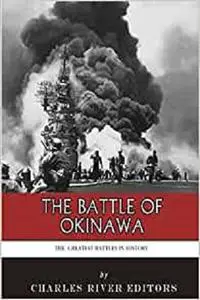The Greatest Battles in History: The Battle of Okinawa by Charles River Editors
English | April 18, 2014 | ISBN: 1499182368 | 75 pages | EPUB | 2.55 Mb
English | April 18, 2014 | ISBN: 1499182368 | 75 pages | EPUB | 2.55 Mb
*Includes historic pictures of the fighting.
*Includes pictures of important people, places, and events.
*Includes a bibliography for further reading.
"If you die there will be no one left who knows the truth about the battle of Okinawa. Bear the temporary shame but endure it. This is an order from your army Commander." - Mitsuru Ushijima to Colonel Hiromichi Yahara.
Near the end of 1944, as Allied forces were pushing across the Pacific and edging ever closer to Japan, plans were drawn up to invade the Ryuku islands, the most prominent of them being Okinawa. Military planners anticipated that an amphibious campaign would last a week, but instead of facing 60,000 Japanese defenders as estimated, there were closer to 120,000 on the island at the beginning of the campaign in April 1945. The Battle of Okinawa was the largest amphibious operation in the Pacific theater, and it would last nearly 3 months and wind up being the fiercest in the Pacific theater during the war, with nearly 60,000 American casualties and over 100,000 Japanese soldiers killed. In addition, the battle resulted in an estimated 40,000-150,000 Japanese civilian casualties.
Okinawa witnessed every conceivable horror of war both on land and at sea. American ground forces on Okinawa had to deal with bad weather (including a typhoon), anti-tank moats, barbed wire, mines, caves, underground tunnel networks, and fanatical Japanese soldiers who were willing to use human shields while fighting to the death. Allied naval forces supporting the amphibious invasion had to contend with Japan’s notorious kamikazes, suicide pilots who terrorized sailors as they frantically tried to shoot down the Japanese planes before they could hit Allied ships. As one sailor aboard the USS Miami recalled, "They came in swarms from all directions. The barrels of our ship's guns got so hot we had to use firehoses to cool them down." As The Marine Corps Gazette noted, “More mental health issues arose from the Battle of Okinawa than any other battle in the Pacific during World War II. The constant bombardment from artillery and mortars coupled with the high casualty rates led to a great deal of men coming down with combat fatigue. Additionally the rains caused mud that prevented tanks from moving and tracks from pulling out the dead, forcing Marines (who pride themselves on burying their dead in a proper and honorable manner) to leave their comrades where they lay. This, coupled with thousands of bodies both friend and foe littering the entire island, created a scent you could nearly taste. Morale was dangerously low by the month of May and the state of discipline on a moral basis had a new low barometer for acceptable behavior. The ruthless atrocities by the Japanese throughout the war had already brought on an altered behavior (deemed so by traditional standards) by many Americans resulting in the desecration of Japanese remains, but the Japanese tactic of using the Okinawan people as human shields brought about a new aspect of terror and torment to the psychological capacity of the Americans.”
Given the horrific nature of the combat, and the fact that it was incessant for several weeks, it’s no surprise that Okinawa had a profound psychological effect on the men who fought, but it also greatly influenced the thinking of military leaders who were planning subsequent campaigns, including a potential invasion of the Japanese mainland. The fighting at places like Iwo Jima and Okinawa went a long way toward swaying the beliefs of American military advisors that invading Japan itself would cause millions of casualties, which ultimately helped compel President Truman to use the atomic bombs on Hiroshima and Nagasaki in an effort to end the war before having to attempt such an invasion.
Feel Free to contact me for book requests, informations or feedbacks.
Without You And Your Support We Can’t Continue
Thanks For Buying Premium From My Links For Support
Without You And Your Support We Can’t Continue
Thanks For Buying Premium From My Links For Support



